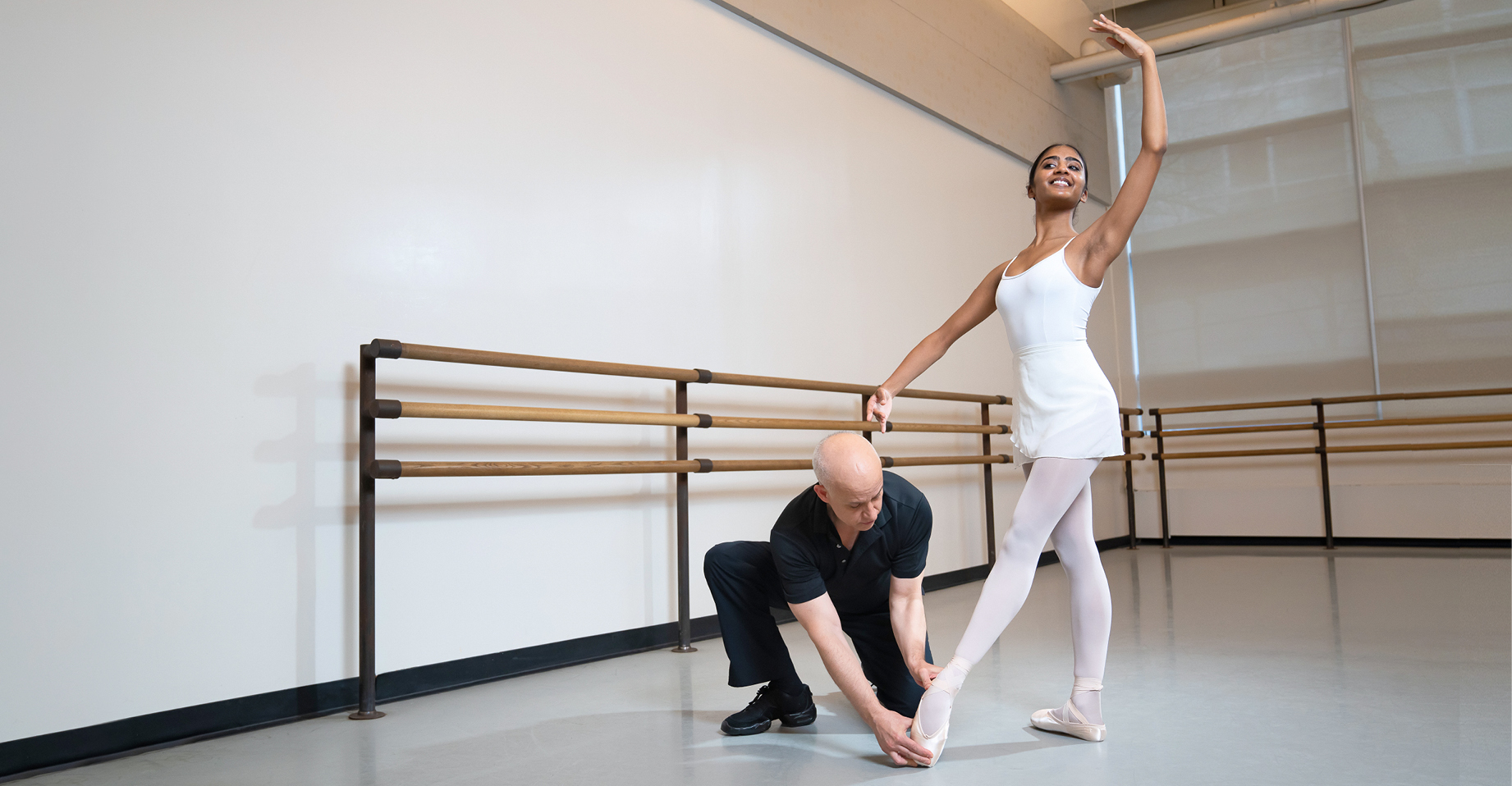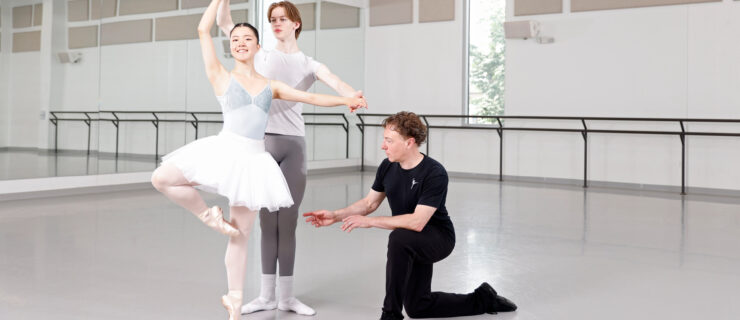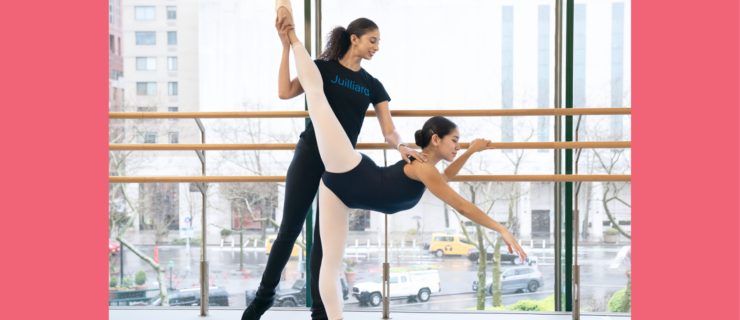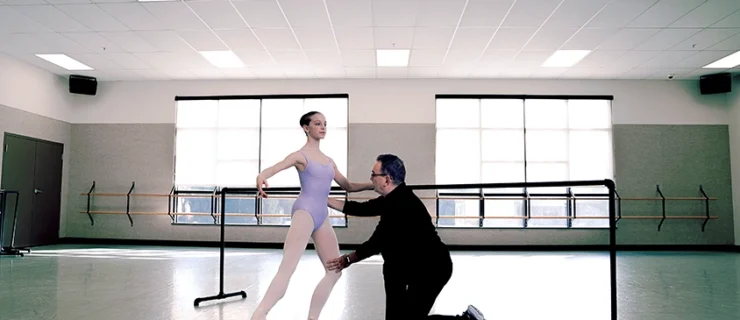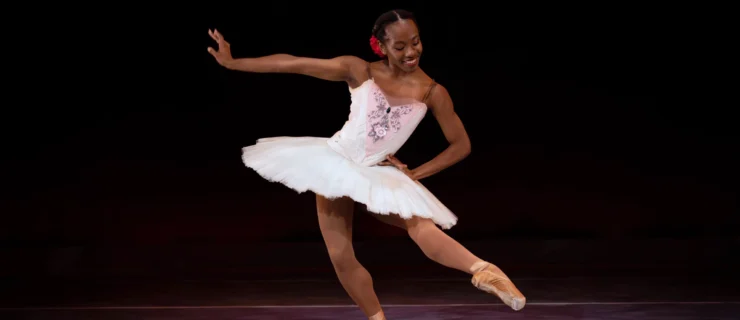Italian Fouetté Insights From Edward Ellison
The Italian fouetté is one of classical ballet’s most complex—and striking—steps, appearing in iconic ballets such as Don Quixote and Coppélia. Whether your goal is to prepare for a performance or simply to reach your highest potential, mastering this movement will elevate your dancing.
Edward Ellison, the founder and artistic director of Ellison Ballet, has taught this step for 30 years and coached students on it in preparation for ballet competitions.
Below, Ellison shares his tips for a beautiful Italian fouetté.
Build Strength and Coordination
As with every advanced step, a polished result stems from a solid foundation. Focus on strengthening the legs and feet. “One must have a very strong relevé and a very soft plié with a light spring,” says Ellison. He suggests doing relevés at the barre in coupé derrière with quarter- and half-turns before progressing to the full movement. (See 3:11 in the video above.)
In an Italian fouetté, each part of the body should work together. “To master Italian fouettés, you must develop proper alignment and a strong supporting side, as well as a very natural coordination,” says Ellison.
The technical principles of en dedans turns apply, as Italian fouettés are typically performed in this direction. “The Italian fouetté is in the en dedans family, so to speak,” says Ellison. “When training, we work diligently on always leading from the heel in en dedans. That creates a connection all the way up the leg, and that’s what leads the rest of the body.”
In the fouetté action, the working side of your back should go forward in opposition of the working leg in attitude. “The supporting heel strongly pushes forward as the attitude leg stretches behind,” says Ellison.
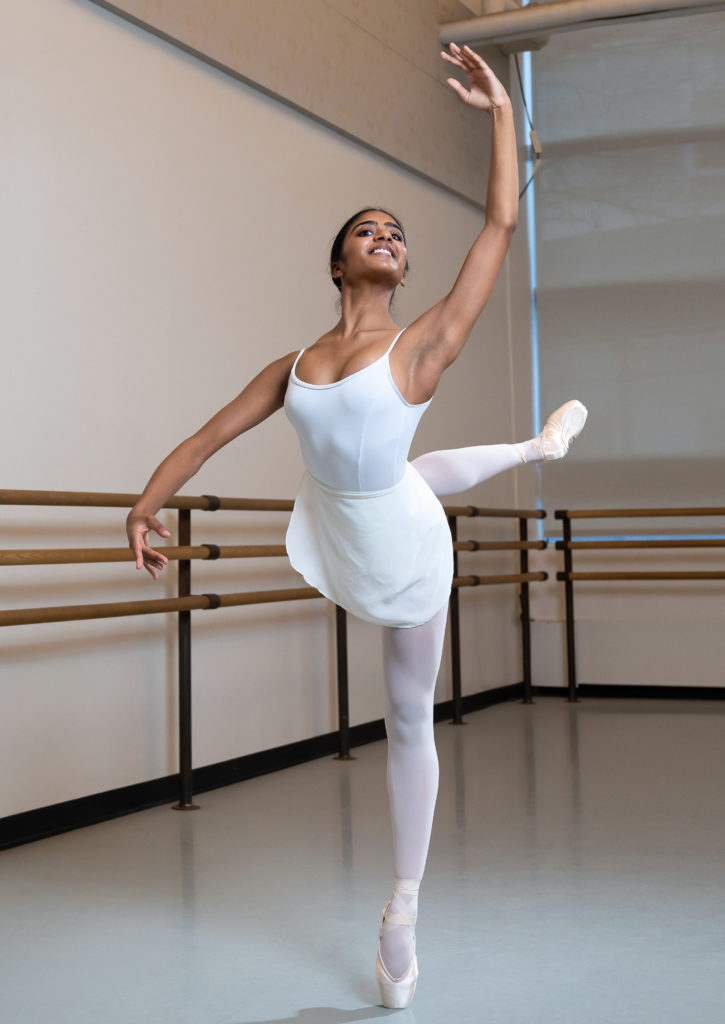
Gain and Maintain Stamina
Repetition is key. “Whatever step you’re trying to master, you have to do it over and over—on the days when it feels great to work, and when it doesn’t feel great to work, when you’re tired and sore,” says Ellison. “If you’re on a mission to get that step, the body will follow, if you do it intelligently.”
Italian fouettés often come at the end of a variation or during a coda, when your energy may begin to wane. Ellison recommends overpreparing to combat the effects of fatigue. An option is to edit part of your music to allow for an extended Italian fouetté sequence, and practice doing twice your target number. Conquering the more challenging version can help you build endurance and confidence.
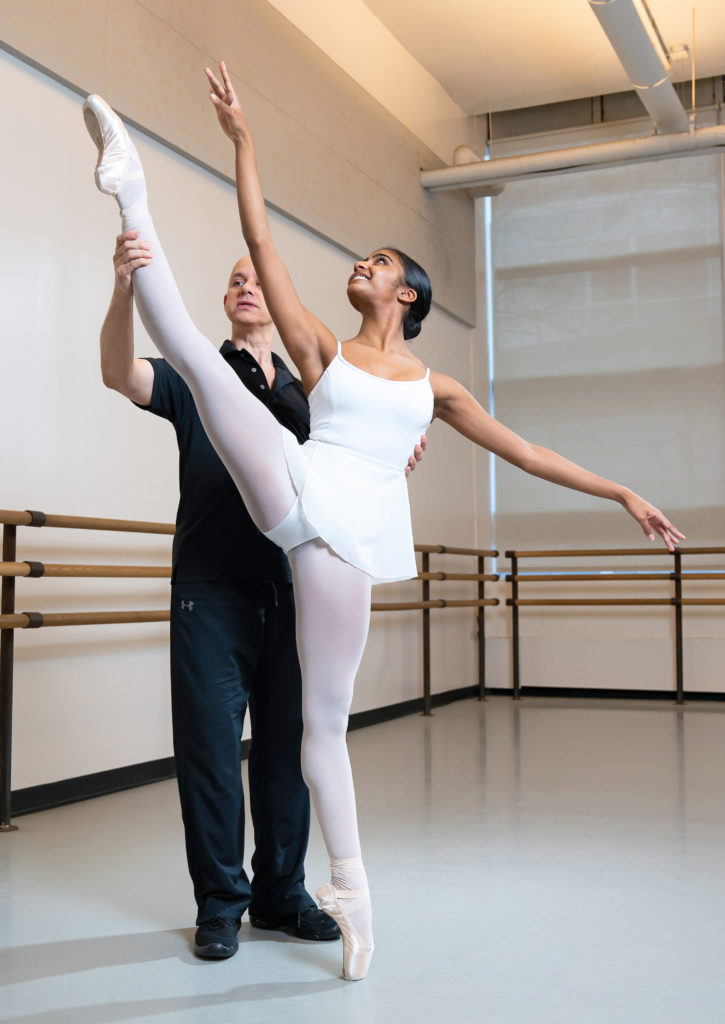
Expand Your Artistry
After becoming proficient in the step’s technique, focus on infusing it with beauty and meaning. “Ultimately, this is about human beings expressing themselves,” says Ellison. If your piece is performed in character, consider how to convey the right characteristics in your Italian fouettés.
Regardless of the role, tune in to the feeling, power or flavor of the music. “That’s what’s really important, because this step is done in a lot of ballets, especially the Petipa ballets,” Ellison says. “The dancer has to understand what they’re bringing to the step. Where Queen of the Dryads has a much softer, more flowing feeling, Gamzatti is bold, with great strength. We have to know what the style is, and what the choreographic intention is.”
Think of your Italian fouettés in the broader context of becoming a generous artist, aiming beyond accolades. “Strive to do your best, but know that the goal isn’t to get,” says Ellison. “The goal is to give.”
Common Mistakes and Corrections
- Ellison often sees dancers beginning an Italian fouetté by turning the supporting hip, which collapses turnout and breaks the continuity required through the body to execute the step. Instead, remember to continue leading with the heel throughout the movement, whether rising to relevé or lowering to brush through first position and into attitude.
- In écarté devant, your working leg should extend toward your front corner, not too far forward or back.
- In first position plié, your weight should be toward the supporting side, not equally distributed.
- Allow the grand battement to assist in the ease of springing onto pointe. Avoid sitting in the plié while the working leg goes to 90 degrees, as that would destroy the coordination and lightness of the step.
